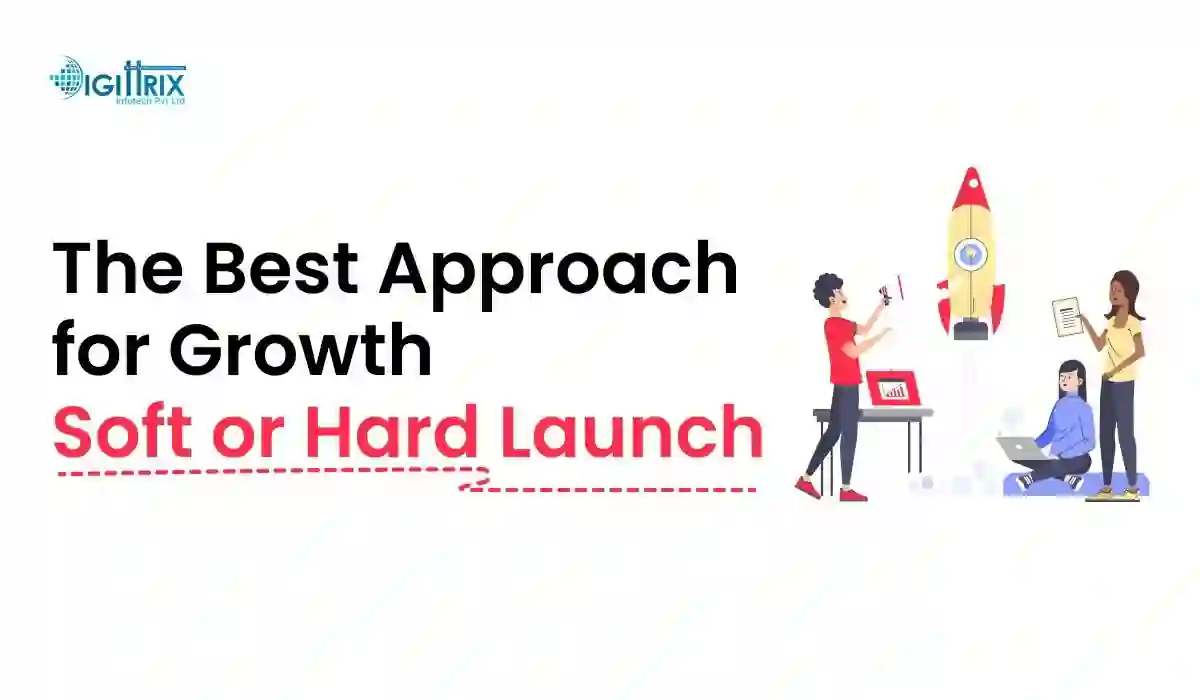A soft launch introduces a product to a limited audience for testing, while a hard launch releases it widely with full marketing efforts.
Highlights
With Over 14 years of Experience in the IT Field, Helping Companies Optimise there Products for more Conversions

Launching a new product is a pivotal moment for any business. The strategy you choose can significantly influence the product's success and the company's reputation. Two primary approaches are commonly considered: the soft launch and the hard launch. Each has its own set of advantages and challenges. Understanding these can help you determine the most suitable path for your product.
Planning a mobile app in 2025? Discover detailed insights on budgeting in Digittrix’s mobile app cost guide.
A soft launch involves releasing a product to a limited audience before making it widely available. This approach allows businesses to test the product in real-world conditions, gather user feedback, and make necessary adjustments before a full-scale release.
A hard launch refers to the complete release of a product to the entire target market, often accompanied by extensive marketing campaigns aimed at maximizing visibility and user adoption from day one.
Example: A startup working with a mobile app development company may choose a soft launch to test its app in a specific region before expanding.
Example: An established brand working with a website development service may launch a redesigned platform with a full promotional campaign to attract its existing user base. Data from LinkItSoft shows poor hard launches may lead to a 25% loss in revenue.
If your product is polished, free of major bugs, and has passed internal quality checks, a hard launch may work. But if you still need real-world testing, go with a soft launch.
Understanding your audience can help. If your audience expects perfection from the beginning, a soft launch can help meet those expectations over time.
A soft launch is easier on the wallet. It’s often used by startups or smaller businesses trying to limit upfront costs.
If timing is critical (e.g., launching during a festival or event), a hard launch may help capitalize on that moment.
If the competition is tough and there’s a chance another product may go to market first, you may need a quick hard launch. However, rushing can backfire if the product isn't ready.
Sometimes, companies combine both strategies. They might start with a soft launch, test the product, gather data, and then move to a full-scale hard launch.
This approach allows for:
It's particularly useful when you're introducing something new but want to avoid the risks of a public failure.
Choosing between a soft launch and a hard launch depends on your specific product, goals, and available resources. There's no one-size-fits-all answer. Both methods offer different paths to the same goal—a successful product. What's important is having a clear understanding of what each approach offers and aligning it with your business strategy.
Launching your product is not the finish line—it's the start of a longer journey. By choosing the right type of launch, you give yourself the best chance of making that journey worthwhile.
Getting ready to launch your app in 2025? Follow Digittrix’s 12-step guide for a smooth and successful launch!
Choosing between a soft launch and a hard launch can make or break your product’s success. Many businesses struggle with product rollouts due to unclear goals, wrong timing, or lack of testing. At Digittrix, we help you avoid these pitfalls by guiding you through a well-planned launch strategy that suits your product, market, and business goals.
Whether you're releasing a new mobile app, website, or custom platform, our team ensures your launch is carefully prepared—whether you need to test in a limited market with a soft launch or go all-in with a full-scale hard launch. With the right approach, we help you reduce risk, gather useful feedback, and maximize user adoption.
With 14 years of experience in mobile app and website development, we understand what makes a product launch successful. From early testing to final deployment, Digittrix offers expert support to guide you at every step.
If you're planning a new product launch and want to make the right move, connect with our team. We’ll help you choose and execute the launch strategy that works best for your product.
Call us at +91 8727000867 or email digittrix@gmail.com to speak with our experts. Let’s build a launch plan that gives your product the best possible start.

Do you need help in Mobile App development?




Join over 1500+ businesses we've already helped!
A soft launch is a limited release of a product to a smaller audience for testing, feedback, and refinement before the full release.
A hard launch is a full-scale release of a product to the target market, often supported by major marketing campaigns to attract widespread attention.
It depends on your goals. Soft launches are ideal for testing and improvement, while hard launches are suitable for fast market entry and higher visibility.
Opt for a soft launch when your product needs real-world testing, feedback, and improvements before reaching a wider audience.
Yes, a hard launch involves more risk due to higher investment and wider exposure. Any issues may affect your brand if not addressed quickly.

©2025Digittrix Infotech Private Limited , All rights reserved.